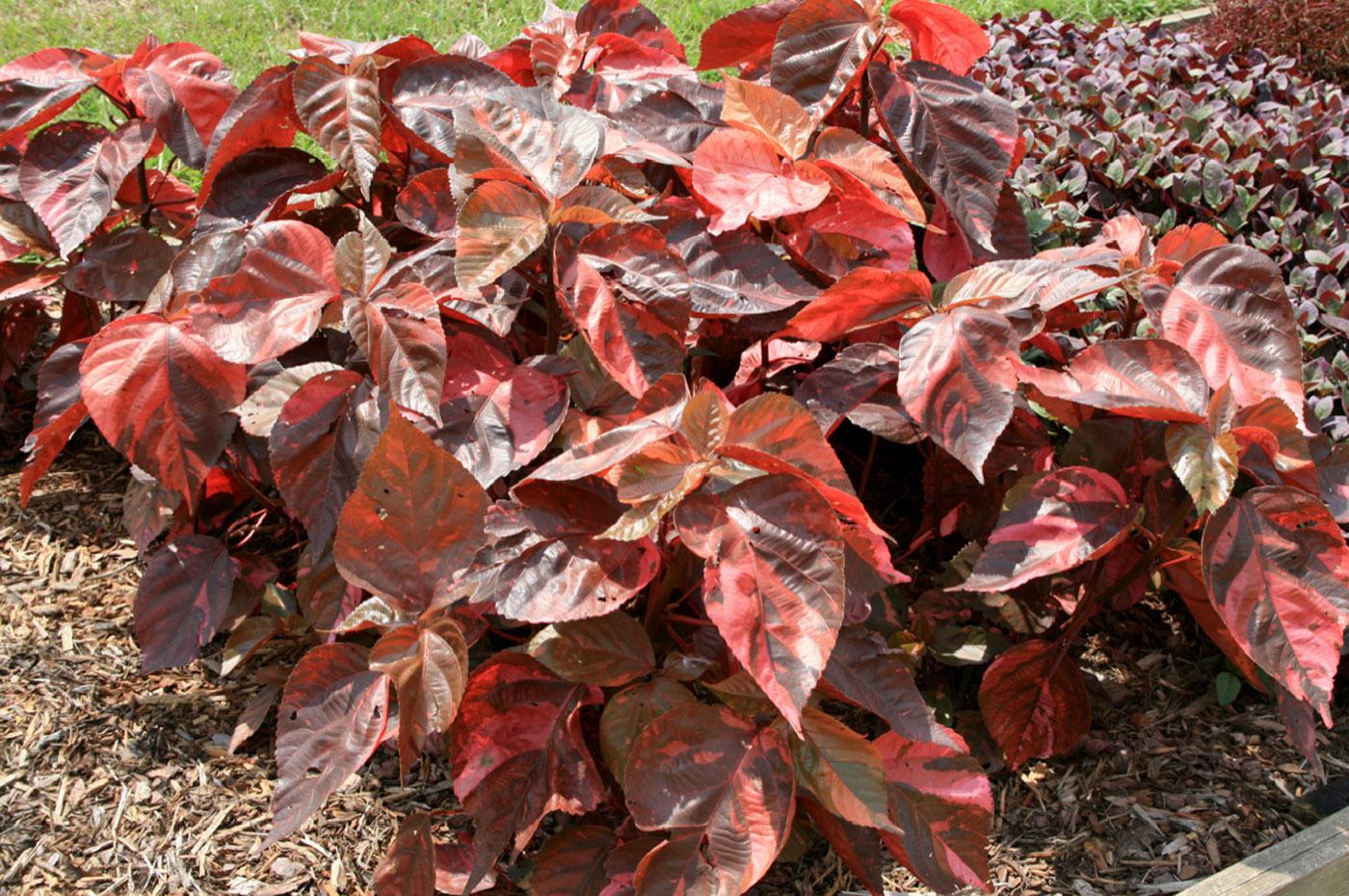Information Possibly Outdated
The information presented on this page was originally released on July 15, 2010. It may not be outdated, but please search our site for more current information. If you plan to quote or reference this information in a publication, please check with the Extension specialist or author before proceeding.
Add colorful foliage to summer landscape
Gardeners who want color in the landscape usually concentrate their efforts on flowering annuals and perennials, often overlooking plants with colorful foliage like caladiums, striped cannas or gingers.
But plants with colorful foliage can be used instead of flowering bedding plants or even in the shrub border. They have always been popular with some gardeners, but there seems to be a growing interest in these colorful foliage plants.
And why not? These plants have attractive foliage and are showy without relying on flowers. Their colorful foliage lasts from initial planting until the first frost or beyond, giving them an advantage over flowering perennials with limited bloom periods.
I want to suggest some plant varieties with colorful red to purple foliage that are worth taking a look at.
Several varieties of copperleaf plant, known botanically as acalypha, are landscape worthy. Bronze Pink is especially attractive in the landscape or containers. The leaves are dark pink to reddish bronze.
In the landscape, Bronze Pink has an upright habit and can grow to 30 inches tall and 12 inches wide. Space them about 10 to 12 inches apart for a terrific show when planted in mass. In containers, Bronze Pink is a great thriller plant that adds height and excitement to any combination container planting.
Commonly known as Joseph’s Coat or calico plant, alternanthera has an interesting group of plant varieties. The recently released Brazilian Red Hot is an outstanding plant for any landscape. The wavy textured leaves display a vibrant variegation of purplish centers and bright fuchsia margins, which gives the illusion of fluorescence. Brazilian Red Hots typically grow to 18 to 36 inches tall.
This plant’s landscape performance was recognized in 2005 when Purple Knight alternanthera was selected as a Mississippi Medallion winner. The foliage is a rich and vibrant dark purple through the summer until frost. Purple Knight can grow up to 36 inches tall.
Any flowers it produces are insignificant and can be removed, but this is not necessary. However, light pruning will promote lateral growth and maintain a dense form.
Acalypha and alternanthera are heat tolerant and thrive in full sun. The colors intensify as the temperatures increase, which means these should be beautiful in our Mississippi summers. Plant in well-drained, fertile soil. Provide supplemental irrigation during prolonged periods of drought to keep the plants going strong.
Try combination planting acalypha and alternanthera with pink verbena, cleome, purple fountain grass and lantana for outstanding summer landscape interest. I am sure these will become favorites in your garden.









